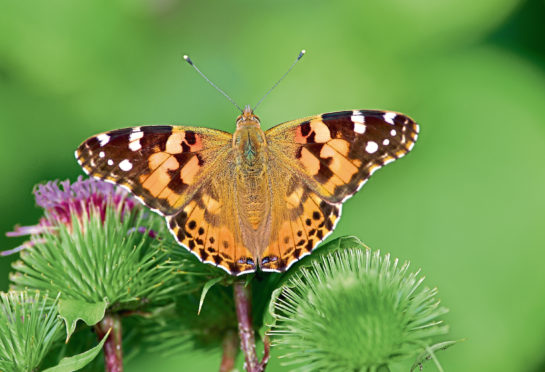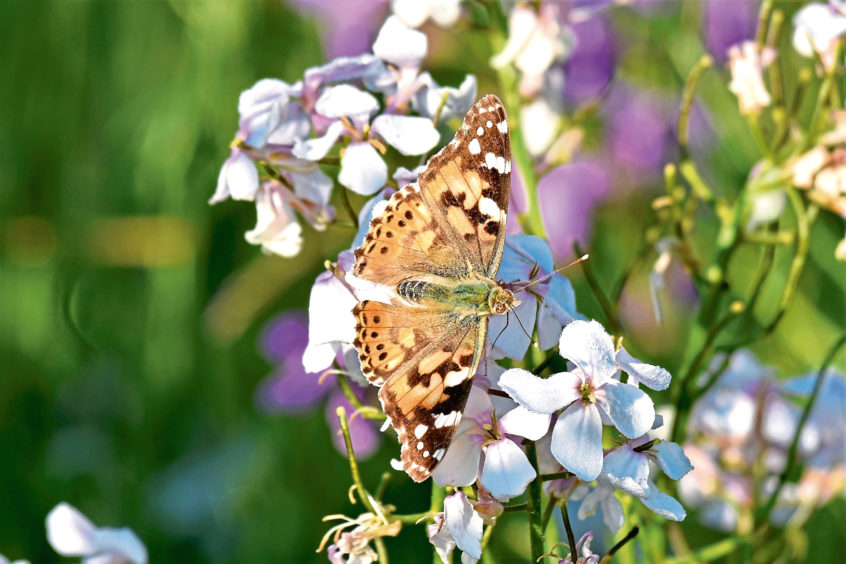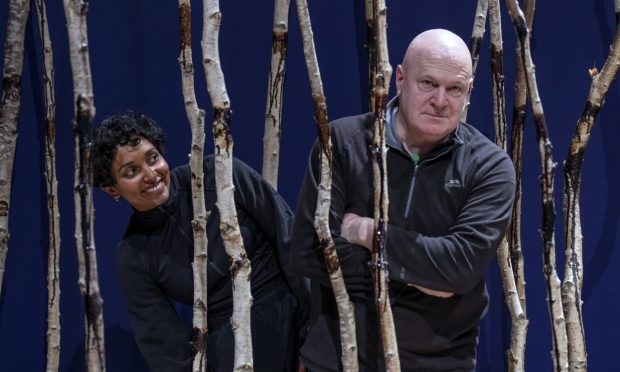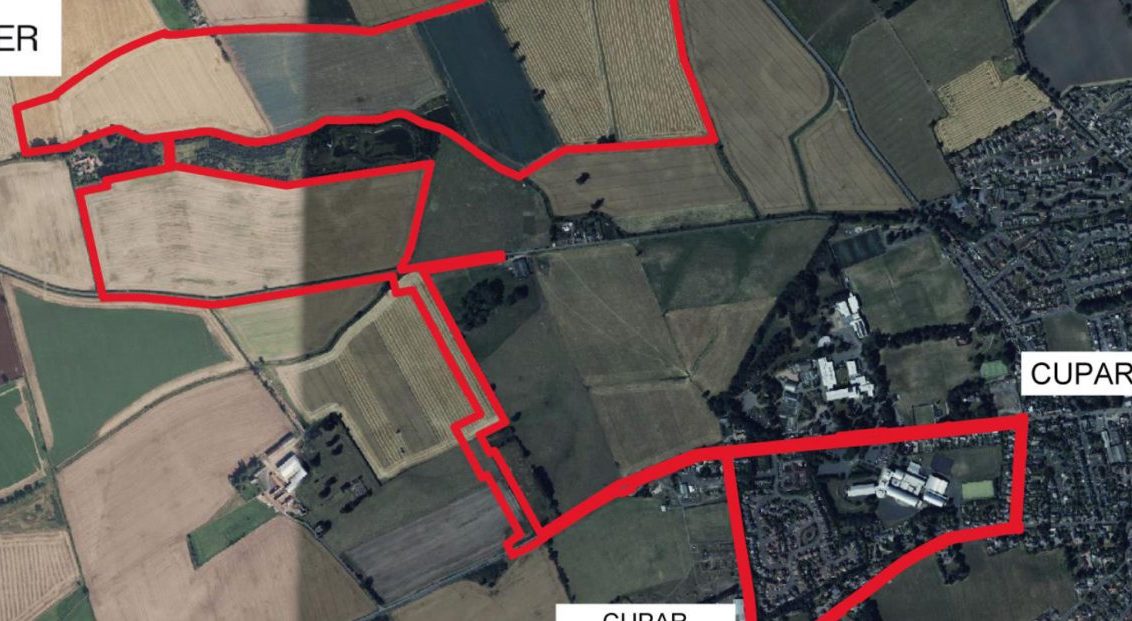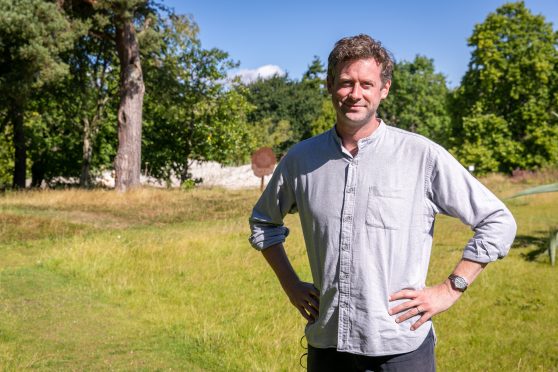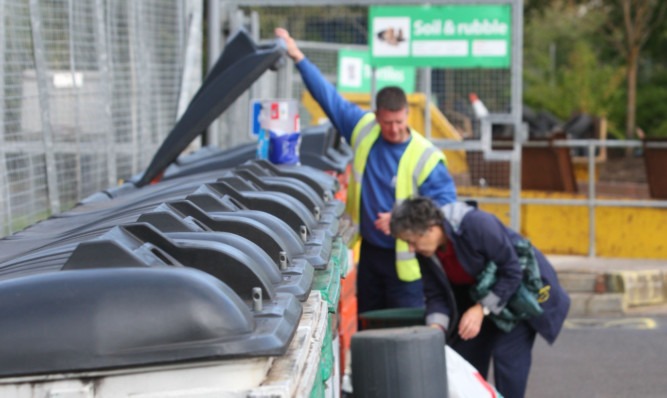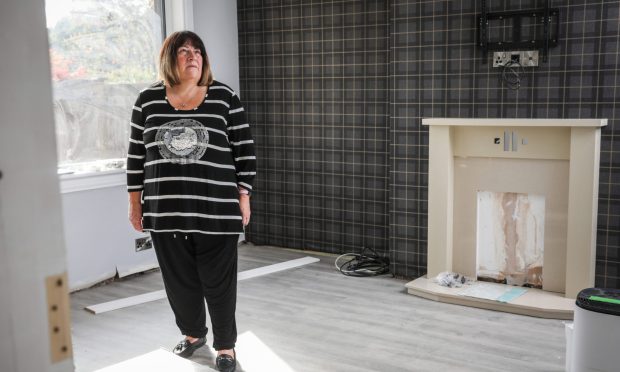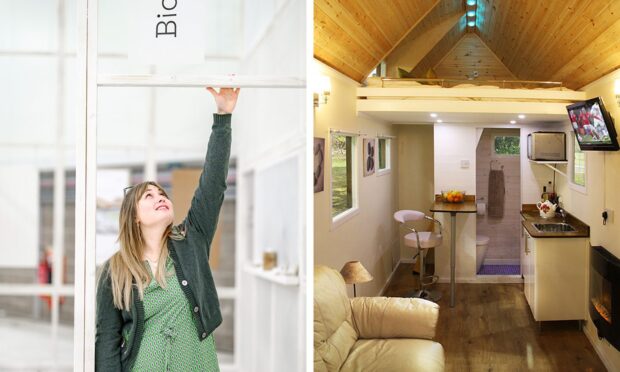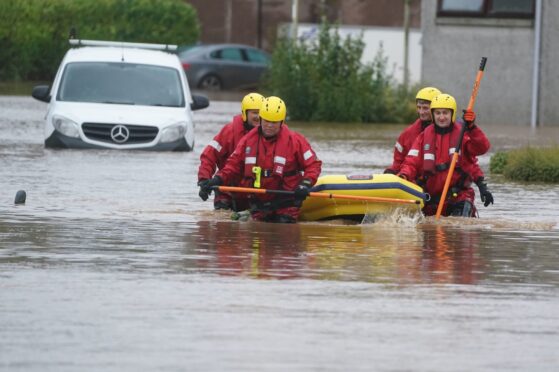The painted lady is the most widely distributed butterfly in the world, inhabiting every continent except Australia and Antarctica. It is the only butterfly ever recorded in Iceland.
A painted lady butterfly whooshes past me on purposeful wings, stalls to alight on some grass, before suddenly taking to the air again. It lands once more, this time on the flower head of dame’s violet, so I creep closer in the hope of snatching a photo.
‘Click, click’, I rattle off two quick shots, but then it flutters up and away out of sight beyond a clump of bushes. This painted lady was mighty flighty, but I was glad to have secured a couple of photos, and when I examine them later, the intricate buff patterning on the wings shines out at me.
Painted ladies are forever a source of wonderment, for it is entirely possible that this one had migrated here all the way from North Africa. How can it do so on such fragile wings? I really don’t know, for it is just one of nature’s many mysteries. But it is certainly a challenging journey, for a painted lady I had found the previous week in the Ochils displayed frayed and tattered wings, a testament to the punishment of the long flight.
But the wings of this one I had just photographed were unblemished and full-coloured, which means it was probably a first generation butterfly from this summer, perhaps the offspring of migrating painted ladies as they made their way up through Europe. This one will then lay its own eggs here in Scotland, leading to a second generation later in the year. But they are unable to survive the rigours of our winter, and most adults will die when the cold sets in.
It is thought that the urge to migrate north is triggered when their density in a particular area becomes so great that their caterpillars start to strip bare food plants and can no longer survive. It is time to move, to find pastures new. In some years painted ladies are scarce in Scotland, in others abundant, and it looks like this is shaping up to be a bumper season.
The next day, I’m down by the river, and within minutes I spot two painted ladies, and then several more. They are everywhere and in numbers I have never seen before. I watch them flutter and swerve on powerful wings, some no doubt seeking out thistles, their main larval food plant.
There are other butterflies about, too. I spot a ringlet, and later a red admiral and a small tortoiseshell. It is good to see them thriving, but this local hotspot belies a nationwide trend where many of our resident species have declined over the last quarter of a century, especially those with specialised habitat requirements.
At the end of the day, it is all about protecting the landscape, ensuring there are wild patches, which are inter-connected by corridors of further wildness. If we get that right, then nature will have a chance to thrive; and if nature prospers, then so do we. Simple, really.
